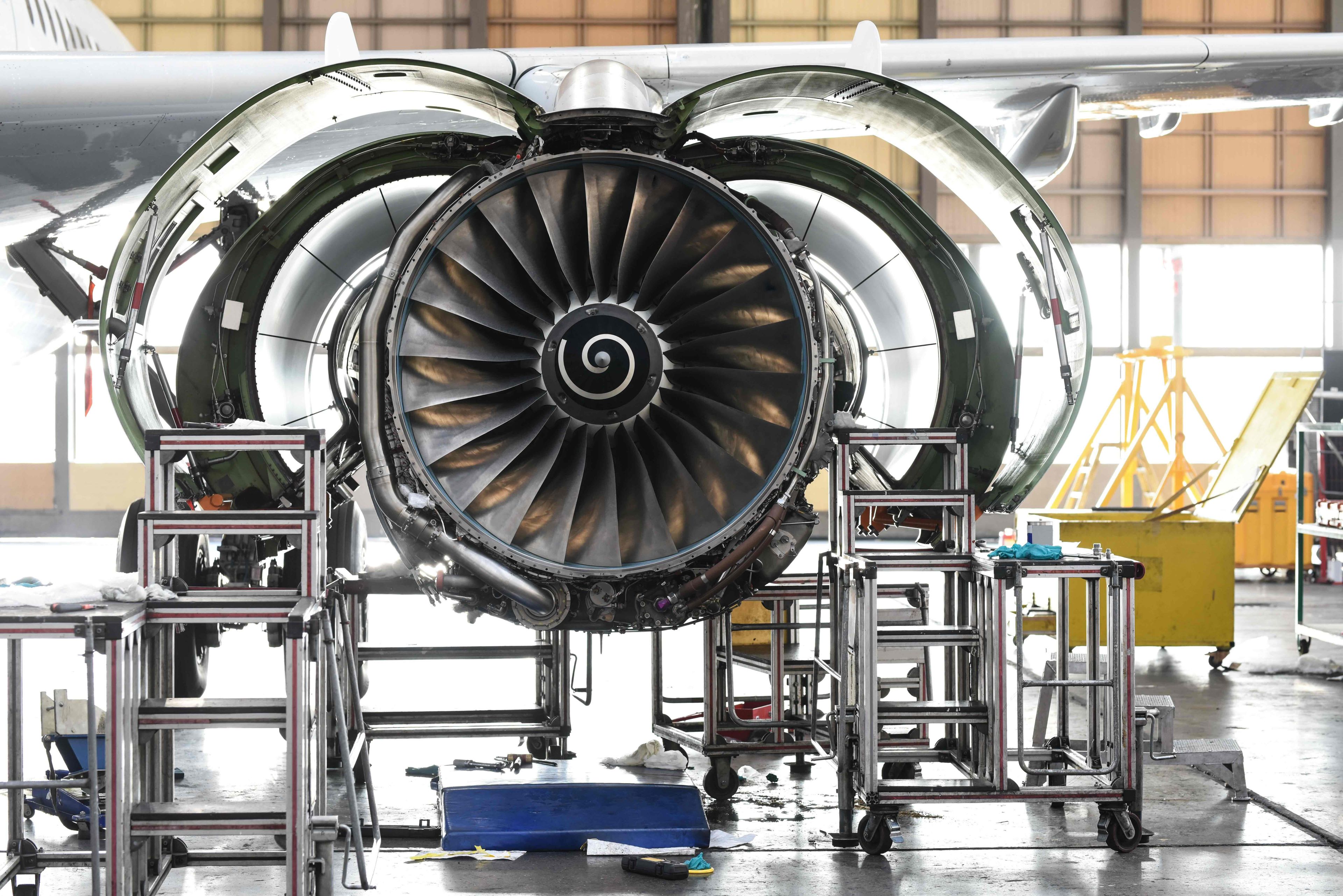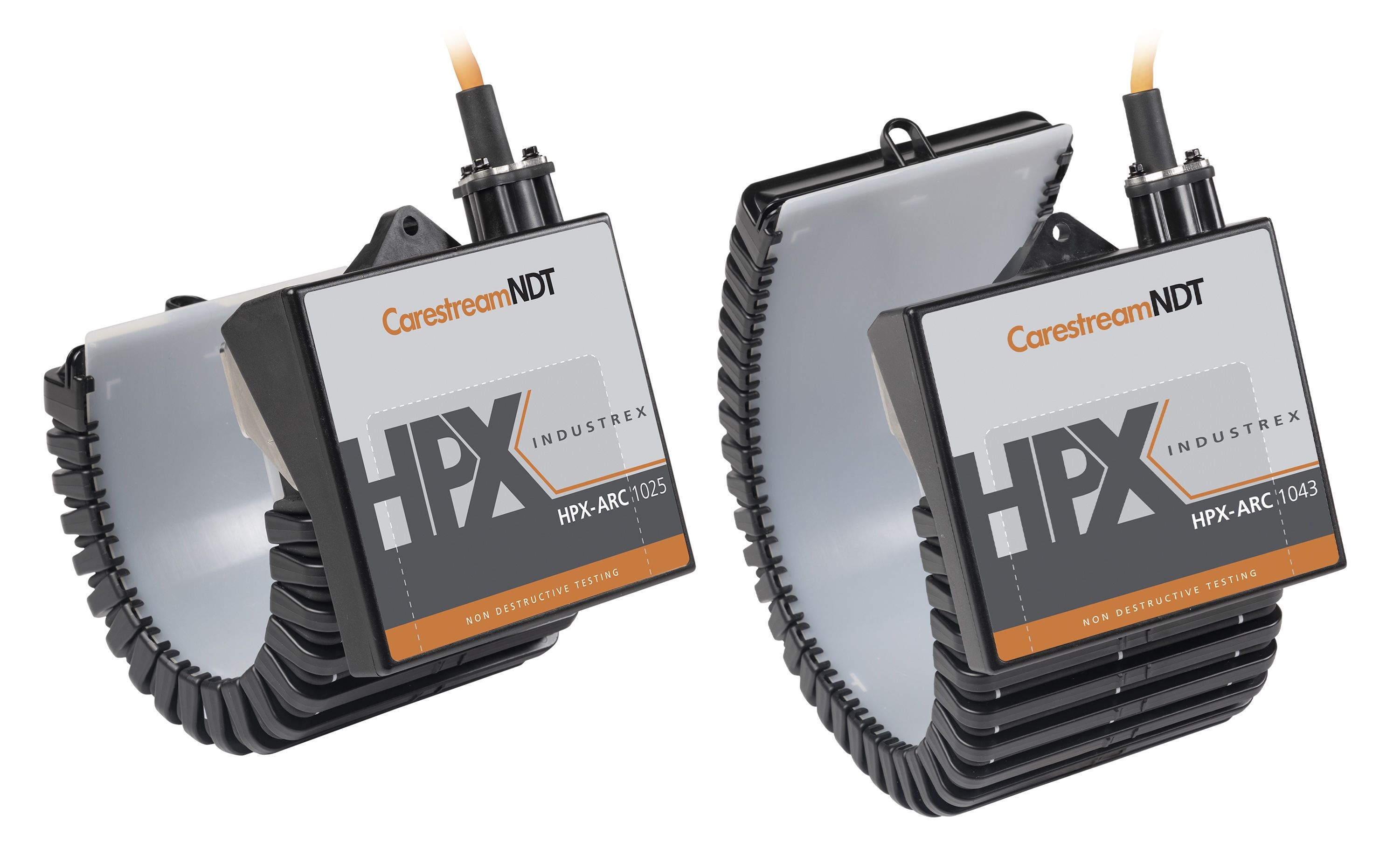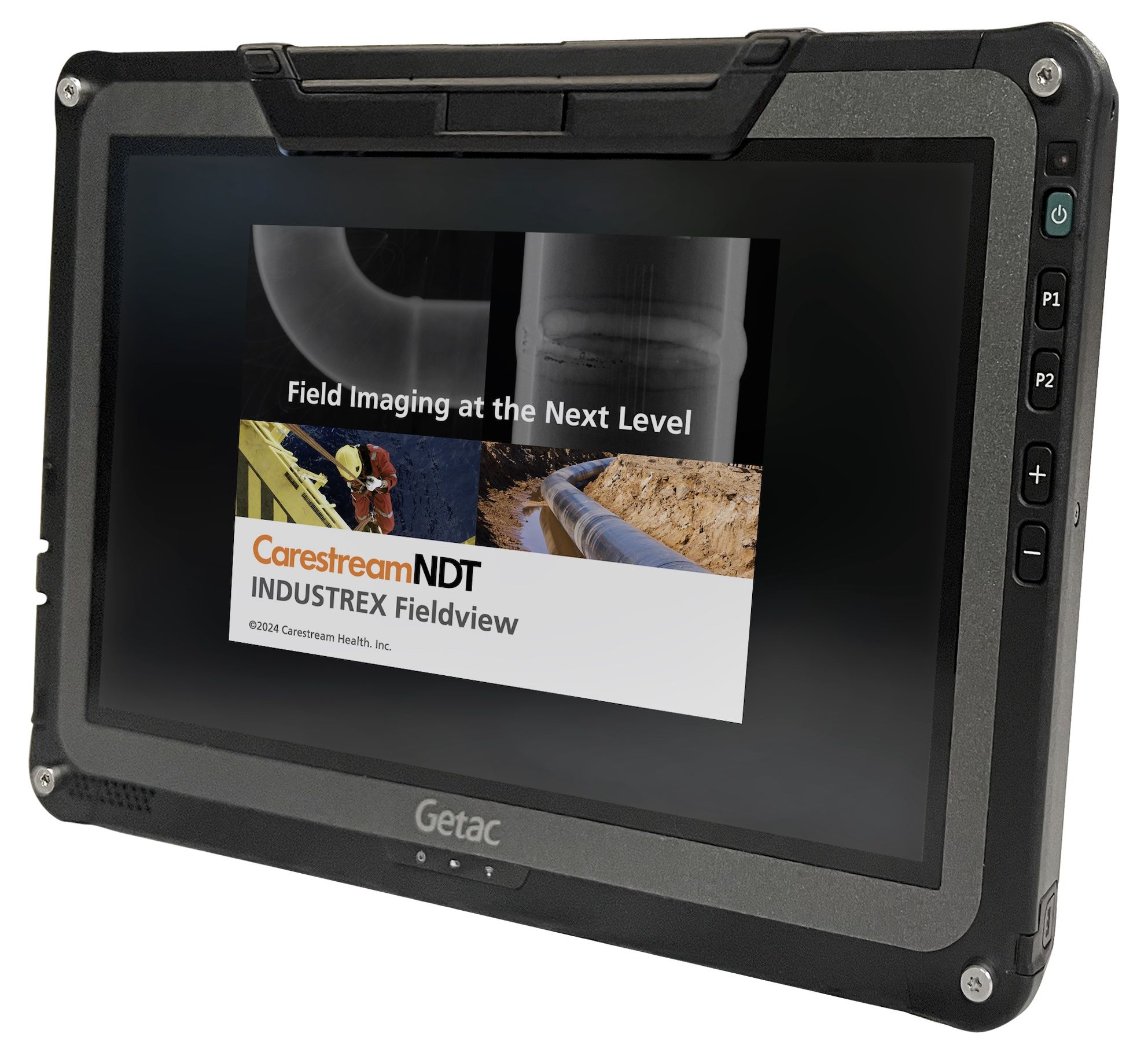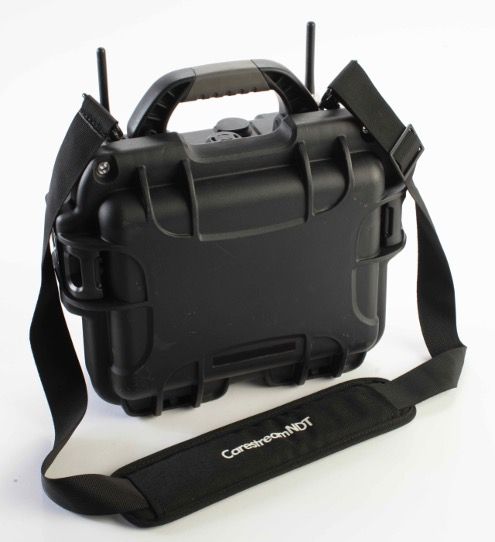Streamlining and Enhancing Digital Radiography Workflows for Aerospace Applications
Thursday, November 13, 2025
It’s about creating value by leveraging an ecosystem and digital toolchain perspective.
By Brian S. White, Dr. Katherine Carpenter, and Kelly Merrell
Sponsored Content: This blog post is from Carestream NDT and does not carry an endorsement or recommendation from ASNT.
Introduction – Transforming knowledge acquisition and decision-making through NDE
The progressive adoption of digital imaging technologies for nondestructive examination (NDE), combined with the widespread integration of advanced engineering materials and innovative manufacturing technologies such as additive hybrid or advanced composite manufacturing, is radically transforming multiple industries. This transformation is fundamentally altering how new knowledge is acquired and how decision-making processes are performed. In a few words, digital imaging processes are transforming not only the face but the heart and soul of decision-making processes; the fusion of these technological advancements has resulted in more efficient, accurate, and informed workflows, enabling organizations to respond more effectively to the increasing complexity and demands of modern industry.
Advanced nondestructive evaluation (NDE) digital imaging technologies have found critical applications across a vast and diverse range of industries. Sectors such as aerospace (including OEMs, MRO, engines, and aerostructures); defense and military systems (including weapons components, armor, ammunition, and military electronics); automotive and advanced mobility (including electric vehicles, batteries, cells, packs, and electric powertrains); semiconductors and electronics; oil and gas (including downstream, midstream, and upstream operations); energy generation (including fossil fuels, nuclear, and renewable sources); medical devices manufacturing; railways and heavy transport; advanced, high-value castings and forgings (including nickel, titanium, aluminum-based alloys); mining; advanced metallurgy; pharmaceuticals; and regulated consumer goods constitute driving forces behind the research, development, and perfection of innovative NDE imaging technologies.
Each of the sectors above is characterized by distinct and specific drivers; for instance, the aerospace sector prioritizes complex geometries and composite materials, while the semiconductor industry demands high-resolution imaging for miniaturized components; on the other hand, the energy sector necessitates the inspection of large-scale infrastructure, such as wind turbine blades, while pharmaceuticals and regulated consumer goods require consistent and high speed evaluation of the integrity of sealed packaging. These unique drivers play a crucial role in determining which specific imaging technologies are integrated into the daily work routine of NDE professionals.
A diversified palette of digital imaging technologies for the aerospace and defense sectors
Due to their critical safety requirements, stringent regulatory compliance mandates, and the substantial value of components and systems associated with them, the aerospace and defense sectors have served as fundamental testing grounds for emerging NDE technologies before their widespread adoption across other industrial sectors. In the most recent two decades, the portfolio of NDE imaging technologies for both sectors has greatly expanded, and at present time it includes, although is not limited to:
Digital Radiography (DR) with Flat Panels and Flexible DDR Detectors: DR dominates aerospace applications due to real-time imaging capabilities and high-resolution output (100-200 μm pixel pitch). These systems enable immediate defect detection and analysis, crucial for aerospace component inspection.
Computed Radiography (CR): CR systems using photostimulable phosphor imaging plates serve as a bridge technology, offering cost-effective digital solutions without major infrastructure overhauls. This technology is particularly valuable for defense applications where portability and field inspection capabilities are essential.
Computed Tomography (CT): Industrial CT scanning has gained significant traction for aerospace applications, providing 3D visualization of internal structures without destructive testing. The technology is particularly valuable for additive manufacturing quality control, failure analysis, and reverse engineering applications.
Automated and Robotic Inspection Systems: Integration of digital imaging with robotic systems has become standard for large-scale aerospace component inspection, offering consistency, repeatability, and access to complex geometries.
Phased Array Ultrasonic Testing (PAUT): PAUT has become the standard for composite material inspection in aerospace manufacturing. OEMs manufacturers have fully integrated PAUT into their Automated Ultrasonic Scanning Systems (AUSS). The technology offers superior defect detection capabilities for complex geometries and anisotropic materials like carbon fiber reinforced polymers (CFRP).
Advanced Ultrasonic Systems: Beyond PAUT, aerospace applications utilize various ultrasonic technologies, including time of flight diffraction (TOFD) and full matrix capture (FMC) for comprehensive defect detection and characterization.
Digital Image Correlation: This emerging technology is being adopted for structural health monitoring and materials characterization, offering non-invasive assessment capabilities that complement traditional NDE imaging methods.
Laser Shearography: In use for evaluation of adhesions and delaminations in large-format composites under stimulation (vacuum, thermal) in mobile systems for MRO, which include automated mapping and digitized reports.
2D/3D computer vision and optical metrology: In use for dimensional verification, rivet positioning, surface inspection, first article inspection, and inline quality assurance.
Each one of these NDE methods and techniques, far from contending with each other, supplements and enriches the palette of the NDE inspector and scientist by synergically serving specific purposes and by addressing precise applications within a workflow.
An expanded and enriched workflow
In a recent chapter published by Elizabeth Gregory and Peter Juarez, from NASA Langley Research Center, and Cara Leckey from NASA at Hampton, they share their vision of a workflow for aerospace components and systems that makes a comprehensive use of digital technologies in the following terms: “The integration of emerging digital technologies is modernizing heritage practices across engineering and scientific fields. Adoption of digital technologies throughout the aerospace workflow can lead to reduced time scales for identifying and implementing inspection solutions, while also improving the information yielded by inspections to enable data-informed decision-making.” (Gregory, Juarez, and Leckey, 2025).
This expanded and enriched workflow (see Figure 2) makes a comprehensive use of an NDE Digital Toolchain that connects through specific NDE-Design interfaces to the backbone of the characteristic aerospace components and systems workflow and “has the potential to enable inspection during design, model-driven inspection optimization, rapid consideration of inspection data for manufacturing process feedback, use of structural health data throughout vehicle lifecycle, and ability to feed-forward inspection data into digital twins and design of future vehicles.” (Gregory, Juarez, and Leckey, 2025). Elements in this NDE digital toolchain, such as design for inspection or model-driven inspection solution developments, converge into the leverage of NDE data to support essential decision-making processes along the workflow, from future concepts to knowledge-driven lifecycle management strategies.
An expanded palette of sensors for enriching the options in your aerospace workflow
Aerodynamic, non-parallel, and non-flat surfaces associated with aerospace components require contour-following capabilities on all applicable NDT processes, and radiographic imaging is no exception. Additionally, the necessary stiffening of aerospace structures often creates complex geometries that challenge NDT detector sensitivity near edges or radii, and therefore the importance of close to edge DR detectors.
The sophisticated and extremely wide palette of manufacturing processes (castings, welding, forging, extruding, bonding), geometries and thickness ranges, alloys and materials types, service pressures and temperatures, and their associated extensive array of specifications and codes offers challenges unparalleled by other industries, and the adoption of our flexible DR sensors helps our customers confront these unique challenges.
For all organizations involved in this industry—regardless if they are still utilizing film, have made the transition to computed radiography (CR), or use digital radiography (DR) based on rigid DDAs to inspect parts—Carestream NDT offers a series of two flexible digital radiography (DR) processes. These 98-micron resolution DDAs can flex into, over, and around objects in tight places and provide high-quality image defect detection; they provide the digital advantage of instant image transfer and allow you to overcome the barriers commonly associated with Film and CR imaging processes. Faster time-to-image and improved image quality also translate into augmented magnification capabilities and a minimized re-shot rate.
Enabling critical decision-making processes throughout all instances of your imaging workflow
Digital sensors require the right combination of hardware and software tools that enable radiographers not only to obtain the most value from the sensors’ characteristics but also to create these NDE / Design digital interfaces by adapting to the specific needs of your organization's imaging workflows.
Carestream NDT’s INDUSTREX Fieldview is an acquisition and validation software extension of the powerful INDUSTREX software suite. It is provided on an industrial, ruggedized tablet (see Figure 4) with an easy-to-use touch screen interface, simplifying the process of image acquisition in hard-to-reach places. This field-ready tablet, MIL-STD-810H certified hardware, 11.6 in. (1920x1080) screen with multi-touch input via touch, glove, or pen, paired and bundled with DICONDE-compliant Industrex Software) and flexible communication I/O (both Tethered and Wireless) allows streamlined imaging obtention, analysis, storage, and retrieval processes.
INDUSTREX Fieldview allows validating digital radiographic imaging compliance at the time of acquisition, right at the inspection point. Radiographers can verify ID’s, markers, proper positioning and IQI sensitivity before moving to the next exposure. Instantly adjust and retake or wirelessly transfer the image immediately to a nearby review station for interpretation. DICONDE-compliant metadata in the digital images obtained opens the door for their assimilation into digital twin models of aircraft for MRO platforms.
Fast and trustworthy transmission of images from where they are generated to the workstation where images are analyzed and interpreted requires flexibility and industry-compliant communications protocols. Our standalone battery-powered Exposure Interface Box or EIB (see Figure 4) enables Wi-Fi access to the detector for high-speed image transmission to image-viewing hardware.
An integrated software solution at the core of your radiographic digital imaging workflow
Once the images have been reviewed at the INDUSTREX Fieldview tablet, images transmitted through our EIB can be analyzed and interpreted in a laptop or desktop computer using our DICONDE-compliant INDUSTREX Digital Viewing Software platform for CR & DR. INDUSTREX incorporates industry-leading image analysis tools, file sharing and storage management features; its modular architecture is an all-in-one software suite that eliminates the need to purchase add-on modules for both CR and DR image acquisition.
Our most recent version, INDUSTREX Digital Viewing Software Version 7.2, includes new features such as Windows 11 Professional and Windows 10 Professional compatibility, Wireless image transfer from our Fieldview Tablet, HPX-ARC 1x, 2x and 4x gain amplification, EDGE processing based on a Region of Interest (ROI), and EDGE Display Filter optimized for the HPX-ARC series.
INDUSTREX provides you with the power to customize and lock your configuration while distributing your software customizations across your fleet of Carestream systems, allowing you to choose your image deliverable layout and look to ensure consistency from system to system and crew to crew; users choose which tools are accessible, keep display filters consistent, easily transfer these settings across their system network and display consistent image data within their images that can include detailed personalizations such as adding their logo and matching their corporate fonts and colors for unique branding.
To further explore how Carestream’s NDT portfolio of products and services can help you advance your digital workflow, go to https://www.carestream.com/en/us/nondestructive-testing-ndt-solutions
By: Brian S. White, Carestream NDT, Rochester, NY. USA, brian.white@carestream.com
Dr. Katherine Carpenter, Carestream NDT, Rochester, NY. USA, katherine.carpenter@carestream.com
Kelly Merrell, Carestream NDT, Rochester, NY. USA, kelly.merrell @carestream.com
References:
White, Brian S. “A Historical Retrospective of INDUSTREX EDGE Image Processing Improvements (Presentation)” In 2025 ASNT Annual Conference. 2025
Carpenter, Katherine. “Correction Best Practices for Flexible Digital Detectors (Presentation)” In 2025 ASNT Annual Conference. 2025
Merrell, Kelly. “Case Study: Flexible Digital Detector Arrays vs Computed Radiography (Presentation)” In 2025 ASNT Annual Conference. 2025
Carpenter, Katherine. “In-Process Components - Case Study of Flexible Digital Detector Arrays (Presentation)” In 2024 ASNT Annual Conference. 2024
Merrell, Kelly. “ISO 7636-2 DigitalWeld Quality Compliance of Flexiible Digital Detector Arrays (Presentation)” In 2024 ASNT Annual Conference. 2024
Gregory, Elizabeth, Peter Juarez, and Cara Leckey. "NDE 4.0 in Aerospace." In Handbook of Nondestructive Evaluation 4.0, pp. 1643-1685. Cham: Springer Nature Switzerland, 2025.





